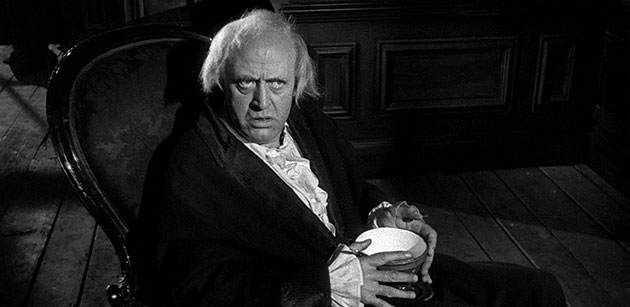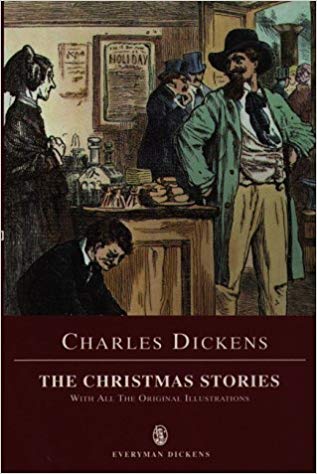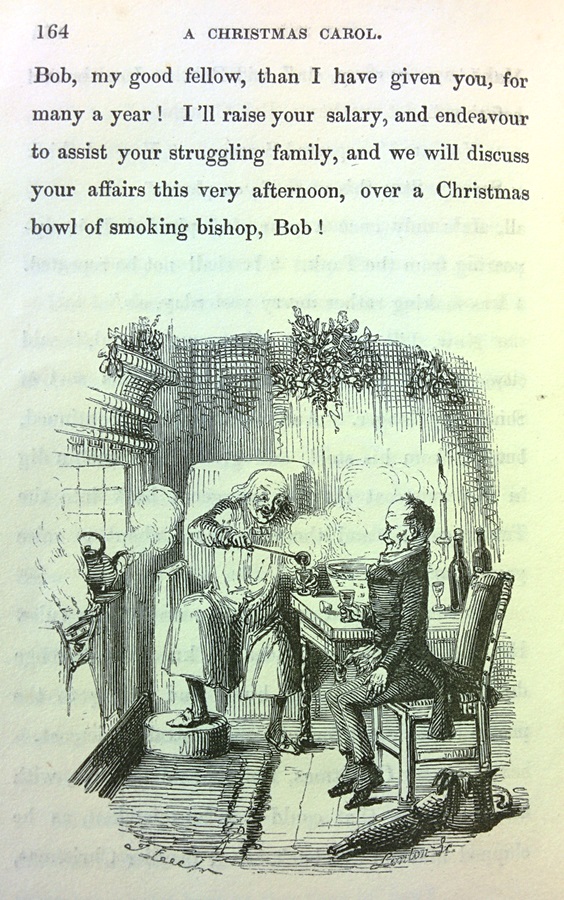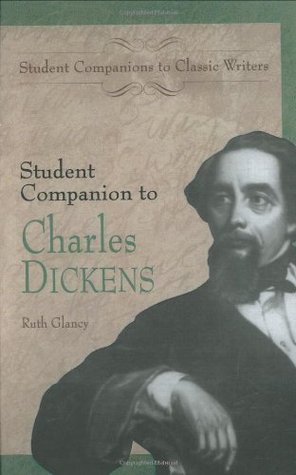“The stories I’ve concentrated on in my career have been the Christmas stories.”

Interview by Aurora Frewin
The first thought that comes to my mind [writes Aurora Frewin] when I hear Charles Dickens is A Christmas Carol. I’ve always been interested in and enjoyed Dickens. I’ve only read his novel Hard Times, but I grew up with A Christmas Carol, seeing many different movies and theatre productions. I’ve been interested in knowing more about Dickens, including more on his other Christmas stories, and his writing.

photo: Concordia University of Edmonton
Ruth Glancy is a retired Professor from Concordia University of Edmonton who taught 19th century literature, specializing in Dickens’ Christmas stories. She has contributed two articles, “Christmas” and “Canada”, to The Oxford Reader’s Companion to Dickens in 1999, published a Student Companion to Charles Dickens in 1999, a Thematic Guide to British Poetry in 2002. Ruth Glancy has published an edition of A Tale of Two Cities with a bibliography, and a student guide and Routledge Sourcebook on the novel in 2006.
Frewin: Are there Dickens stories that you’re more drawn to or find strong?
Glancy: Of his novels, I like all of them. Although, the ones I’ve concentrated on in my career have been the Christmas stories. I’ve done editions of them, bibliographies, and I’m still doing work on his Christmas writings. He did five Christmas books – A Christmas Carol was the first one, and he wrote four more the same length of A Christmas Carol. He called them the Christmas books. They were written in 1843 to 1848. He stopped doing it because so many other writers started copying the idea. The market was flooded with Christmas books, because the publishers and people loved them. Two years later, he started a weekly magazine, and at the end of that year, he wanted a special Christmas number of the journal. So, he invented what has come to be known as the Christmas numbers, and that first year he got contributions from other writers.

We talked about the framework of this journal, published in Dickens Household Words, where he came up with themes related to Christmas, linking the stories together. One framework was the story The Holly-Tree Inn where a man gets snowed in at the inn in Yorkshire, and he listens to the stories of the guests and workers. This allowed Dickens contributors to add their own stories into this journal. Another framework is based on Charles Dickens and his collaborator Wilkie Collins, where Dickens is the captain of one ship, and Collins is the mate of another, and both ships getting shipwrecked.
Frewin: I read your bibliography and saw the Christmas numbers, but I had never heard of them before. Why do you think they are not as well known like A Christmas Carol?
Glancy: That’s a very good question. Partly because of their format. Oxford University Press has been working on an authorized version of Dickens for about 40 years.
Frewin: Wow!
Glancy: They did, maybe five novels, it was called Clarendon Dickens. Clarendon is Oxford. One of the editors died, and the other who took it on fell by the wayside, and so the Clarendon Dickens completely stopped. And then, just a few years ago they started it up again, and I was asked to do the Christmas numbers volume. This is the first time that the complete numbers will be published. Not with just with Dickens’ sections, but with all his contributors. The Christmas numbers were from 1852 to 1867. In 1867, Dickens and Wilkie Collins, Dickens co-partner, wrote one between the two of them.
Here, Ruth Glancy talks about how many magazines were making Christmas stories, and Dickens was tired of making up so many stories. She also talks about how some of the stories that Dickens would receive did not work well with the theme, but they were published, nonetheless.
Glancy: So, we were talking about why they aren’t better known. Dickens stopped in 1867 because he got fed up trying to come up with new ideas. So, he took out the bits that he had written from these numbers and published them as Christmas stories. But they are very disjointed because they’re just the framework, and sometimes not the whole framework as Dickens didn’t keep Wilkie Collins section. The Christmas stories are hard to understand and follow. So that’s part of the problem.
To be fair, he had the kind of huge, exhaustive imagination that was better for big novels where he could go deep. He wasn’t so suited for the short form, but at the same time he loved his Christmas numbers. A lot of them are autobiographical.
Frewin: Really?
Glancy: Yeah, he’s often in them. They come from events, and from a visit somewhere. He’ll put into a Christmas number. He did have themes that would come up.
Frewin: Which themes would those be?
Glancy: The ones you’d find in A Christmas Carol really. He called it Carol Philosophy, about the necessity to not harbour grudges, and not dwell on the past.

Ruth Glancy here brings up Great Expectations and a character who dwells on the past as an example.
That’s Scrooge. You must get out in the world and surround yourself with people.
Frewin: It’s not until he meets his past, present, and future that he starts to understand.
Glancy: Yeah, exactly. What triggers his renewal is when he sees himself as a child and realizes when he was young, that he was friendly and had a loving heart, but he’s lost it. You’ve got to return and that’s another big Dickensian theme of course is – the child. Wordsworth said the child is father of the man because he is more imaginative. We tend to shut ourselves up as we get older. We don’t see things as imaginatively as children do, and Dickens saw that as a big factor in redemption and in being compassionate. A lot of his stories and his Christmas books are about how compassion often comes out of suffering as long as the suffering doesn’t turn you inward.

Here we talk about imagination and the child in Scrooge, and how Scrooge turns inward. I then think of Hard Times and we turn onto the subject of how childhood and imagination is portrayed in the character Sissy Jupe, and the challenges of imagination versus fact.
Frewin: What is Dickensian? I saw that it was about the era of industrialism, but does it have other areas like childhood?
Glancy: It has a lot of meanings. People tend to use it as a shorthand for everything that was wrong with Victorian England. Dickens pointed it out of course – the slums and disease. When people use Dickensian, “oh that’s a Dickensian place” it would be like a workhouse, but it also means everything that values childhood and imagination. Kindness, compassion, and looking out for each other.
“Another use of Dickensian is when people are comparing him to other writers, like John Irving. Nowadays, if a novelist is compared to Dickens, it probably means that he or she has a lot of characters, and they will be eccentric, idiosyncratic, and odd. And their novel will be long, and complex with a lot of different thoughts going on, with mystery and hidden wills. Little dark instances full of ghosts, noises and things going on we don’t know yet. Sometimes they mean dark to0, but Dickens can be funny too.
Ruth Glancy and I talk about the housekeeper in Hard Times and the hilarity about the scene.
Frewin: One of the things I’ve noticed about some people when they read Dickens, is some of them don’t like his long descriptions.
Glancy: People are always saying that and will tell you he was paid by the word and that’s why, which is nonsense. I would say that there is a reason for these descriptions. The writer chooses what to put in.
We moved onto talking about a couple novels and how meaning can be lost in television. I got curious about adaptations of A Christmas Carol.
Frewin: If Dickens were alive to see all these adaptations of A Christmas Carol, do you think he would be proud of them, or would he feel like there is something missing?
Glancy: Some of them. I love the Muppets A Christmas Carol.
Frewin: I love that one too!
Glancy: It’s the best, and I think he would have liked that because it’s very true to the spirit and it’s funny. He did adapt quite a lot of works for the stage. So, he did approve of adaptations. He didn’t always like how they were done, but he did write and help with some. He almost became an actor. He liked acting and he acted out his characters. His daughter describes how she would pass the door of his office, and he would be in front of the mirror and his face and voice would be quite different, as he acted out bits of his characters. I think that’s why his characters are so lively, so original.
Frewin: If you wanted to get a good overview of Dickens, would you read Hard Times and A Christmas Carol?
Throughout the interview, we had brought Hard Times as that is the one book I had read. Ruth had commented on how many of the themes of in Hard Times and A Christmas Carol are very similar. Themes included in both were isolation, childhood, and a few others.
Glancy: Pretty much everything that Dickens believes is in A Christmas Carol. It was the first thing that he could see the whole thing, as you know he published in installments. You can’t go back and change it. In 1843, he knew what he wanted to write about – Tiny Tim and Scrooge, and he wrote the whole thing. He was able to edit and see it because its short. And that was very influential. The difference between the novels that came after the Christmas books and before is quite crucial. He got better at plotting and of the thinking of the thing as thematic.
We ended up talking about Dickens and his world.
Glancy: We talk about the Dickens world, and if you like Dickens, you step into his world, and you’re surrounded by it. He’s so atmospheric and this is where his descriptions are important. That’s what surrounds you, and you lose yourself in it and you become absorbed into this amazing world he’s created.
We ended our conversation talking about Dickens and his trip to Canada and America where he would do book readings.
At the end, I felt incredibly happy and knowledgeable about Dickens. I enjoyed listening to Ruth Glancy and her extensive knowledge and throughout the experience I craved the other Dickens books. My next reading list includes Dickens stories, and I have no doubt that they will be as amazing as A Christmas Carol.


Recent Comments